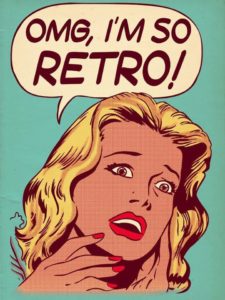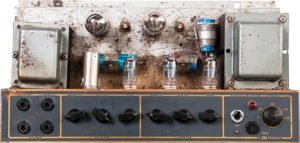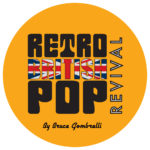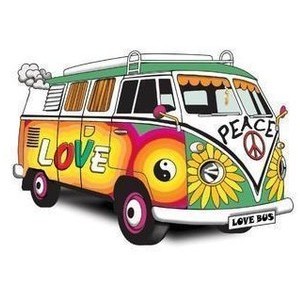Everybody loves music. But like a fine wine, the music you love is very much a culture, taste and fashion statement. Retro music is typically songs that were written and listened to early in your life. Here at Unlimited Power Records we focus in on the 60’s, 70’s, 80s and 90s that has elements from any or all of those eras.
What is retro for people is age dependent; younger generations are rediscovering retro music as NEW music and they are adding their own twists to it bringing it back to life in a wonderful new way. Here at Unlimited Power Records we use the term ‘Classic Retro’ to identify the music of the 1950’s to the 1990’s, since the late 1990’s to the 2000’s is now ‘Retro’ to many song listeners.
 In the 60s and 70s there were definite leading styles coming out of England and the United States. Blues and RB influenced Music created in England dramatically affected musicians in America and vice versa. There were a lot of very original bands during those years and experimentation was the standard rather than the rule.
In the 60s and 70s there were definite leading styles coming out of England and the United States. Blues and RB influenced Music created in England dramatically affected musicians in America and vice versa. There were a lot of very original bands during those years and experimentation was the standard rather than the rule.
The record companies were trying everything and were tied to formulas just like they are today. To reproduce one of these genres of music you have to listen carefully to the music and realize that it was very experimental. But that was the beauty of it.
As well as listening to these genres another good way to learn them is to produce or perform cover versions of your favorites from those era’s. The more the better, with your own attempts at creating originals in those styles as part of the journey.
Practically every 3 years music seemed to evolve dramatically. Older songs were rediscovered and reinvented. Big Hair Bands, Shredders and FM synth came into fashion in the 80s. The 90s saw grunge hit the bit time and multi octave singers and garage band screamers come into vogue.
Music of any era is defined by the songwriting styles AND the instrumentation and technology that was available at the time. Why instruments? Because many of today’s instruments did not exist yet. Digital synthesizers were an 80’s thing and you won’t hear 80’s style FM synth bass lines (A’Ha – Take On Me) in the 60’s. Other instruments were tremendously popular. Of the ones mentioned here, every single one of these was investigated by the Beatles and George Martin. Moog synthesizers were huge in the 70’s following the release of Wendy Carlos’ ‘Switched On Bach’. Organ was a mainstream instrument in the 60s and 70s. The 80s found a new pumping FM synth and techno. The 90s got back to the roots with down and dirty with distortion and loud soft phrases. Whilst this barely touches on things it will help your mindset when you listen to music produced during a generation to listen to the instrumentation and technology!! Hey, the Fender Stratocaster didn’t even really hit mainstream until the 60’s.
And let’s not forget Marshall amps and cabinets. Since instruments started to be electrified artists and manufacturers discovered the Amplifier and Speakers enhanced guitar sounds much more than just increased volume. A guitar with a distortion pedal plugged directly into a recording console will NOT have the same sound as a guitar amplifier and speaker played/recorded with a microphone. You see distortion can be very harsh and tiring on the ear. But a large speaker cone which can only vibrate up to a certain frequency tends to ‘smooth’ out the harsh high end frequencies making it much more pleasing to the ear.
So bottom line: Music genres evolved with the instrumentation which evolved with the electronic technologies. Gear that sounded good resulted in more audio companies investing R&D to invent bigger and better amps, speaker winding technologies, electromagnetic pickups and the list goes on.
Where would SuperTramp be without the Wurlitzer and Rhodes electric piano, where would Led Zeppelin be without the electric guitar, where would Kraftwerk be without the synthesizer and where would Pink Floyd or U2’s edge be without echo units?
60’s Instrumentation included:
- 12 String Guitars (Yardbirds)
- Piano
- Harpsicord
- Orchestra instruments (Notably brass, strings and flutes)
- Tambourine
- Sitar
- Flute
- Ground-breaking new electronic instruments (Like Clavinet, Mellotron etc.)
- Saxophone (didn’t get super popular until the 70’s – e.g. Supertramp and Foreigner)
60’s Technologies included:
- Fuzz (Stones – Satisfaction)
- Wawa pedal (everywhere, lots of this in groups like Cream, Hendrix, Early Chicago)
- Guitars & Vocals through Leslie Amps (with rotating speakers adding a doppler effect)
- Reverb (Ever heard those reverb crashes where they banged the top of the amp?? LOL)
- Old School Echo (Echoplex and multiple tape decks)
- Feedback (mostly on guitar and sometimes on voice as an effect).
- Reversed recordings (done by clipping tape and feeding it backwards) – Everywhere
- Voices through Leslie speakers
- Cheap sounding primitive keyboards
In the early 60’s albums started to contain LONG songs toward the end of the 60’s whereas in the early 60’s songs were typically 2:30-2:45 minutes long MAX, to the point of having complete album sides of Jams (like Rare Earth – Get Ready and In-A-Gadda-Da-Vida). Studio bands were getting more and more into non Pop radio song lengths on albums. Jethro Tull even released ‘Thick As A Brick’ – an entire album where just one song spanned both sides of the record album. Then you had the growth of ‘Prog Rock’ where bands and even solo artists released concept albums such as Rick Wakeman’s ‘Journey to the Centre Of The Earth’
The top 40 charts didn’t completely represent the “late night radio” and listeners discovered and requested songs on albums that were considered mainstream by the record companies which started to go away with the arrival of MTV which created a whole new breed of “Video Stars”.
And the list goes on….and on…
The paradigm band in the 60’s was the Beatles both early and late mostly because they evolved into a band that incorporated a LOT of styles into their music and was supported by a huge flock of technicians and symphonic musicians. But there where many players in the game of music back then and a lot of musical shoes to fill. A huge quantity of musicians both British and American were trying to fill any empty space and especially heading into the 70’s. Some of the other early biggies were The Kinks, The Hollies, The Who, The Stones, Jimi Hendrix, The Yardbirds and all its spin offs to name a few. There were lots of one hit wonders as usual. Finally, there were the heavily experimental bands like Iron Butterfly whose album side left a deep impression and help promote the 25 minute self-indulgent song best done as a jam with each instrument soloing somewhere. Moving into the 70’s created a wide open playing field musically with the Beatles splitting and many other bands coming of age, and the emergence of glam rock like Bowie, Mott the Hoople and many, many more styles. Finally, the genre’s started getting more defined with the arrival of Heavy Metal. Music got tighter in general and the musicianship went through the roof.
What would Retro genre be without California, Chicago, New York and many of the other sound powerhouse areas in the states?
The first sounds that come into mind are the California/West coast sounds that were more psychedelic and often contained reverb and surf music etc. Groups that did this sort of thing would be Paul Revere and the Raiders, Jefferson Airplane, Strawberry Alarm Clock, The Beach Boys and The Monkees. Los Angeles and San Francisco where breeding grounds for new bands. Top 40 bands like Mama and the Papas sound very garage band and primitive today but had great harmonies. Songwriters were used for commercial pop but many bands tried to get into the mix with their own tunes and they grew into amazing bands in the 70’s. Bands like Paul Revere and the Raiders and The Monkees had writers and used studio musicians in many of the recordings.
Yes, it’s gets a bit muddy and is open to interpretation but if you listen to the types of sounds that were popular you’ll quickly realize that there are styles that date the sound of the music as well as the instrumentation. Many Pop sounds are serious crossover songs. They might have elements of Rocks, Latin or otherwise.
The best way to understand the Genre is to listen to some of the bands involved in it and try to EMULATE them. Write a melody that takes one of the existing melodies and tweak it. DEFINITELY listen to the phasing and instrumentation, listen to the vocal style, listen to the beat and listen to the phrasing.
The goal of this article is to push deep the idea of getting inspiration for creating BRAND NEW songs that are tagging off these eras. Even if they have a “splash” of modern, that’s ok! But the core of the song should create RETRO BABY!
REFERENCE SONGS: (mega short list) for 60’s era
These songs will help understand the era (there are many more but these are great representations).
- I Can’t Get No Satisfaction – The rolling stones (Solid classic fuzz sound)
- The Beatles:
- Norwegian Wood
- Help
- Day in the Life
- The Monkees (California Pop) – Last train to Clarksville
- (Actually, any Beatles is to reference and learn to recognize the musical differences between the albums)
- Paul Revere and the Raiders – Let Me, Kicks
- Strawberry Alarm Clock – Incense and Peppermints (fuzz guitar and harmonies)
- Jimi Hendrix – Reverse Guitar – Castles Made Of Sand
- Spirit – Nature’s Way
- Lemon Pipers – Green Tambourine – Tambourine, Sitar
- Iron Butterfly – Ina Gadda Da Vida – Fuzz Guitar, Organ
- Cream – White room – Any from their last album (wa-wa, blues guitar work, vocal)
- Harmonies – Beatles of course, practically untouchable in perfection
- Electric Prunes – I had too much to Dream – (Reverb Smash, Psychedelic sound, reverse instruments)
- The Who – I Feel Free – The must hear pure rock tune (snuck this in) – Free styling Keith Moon drums.
- Jefferson Airplane – White Rabbit – Psychedelic CA pop rock
- Rare Earth – Bluesy based standard with Organ and fuzz guitar (an Amazing album side, get ready).
- Bee Gee – Lonely Days (Almost sounds like a Beatles style song. Piano)



